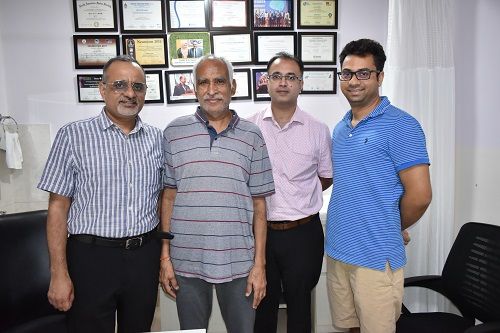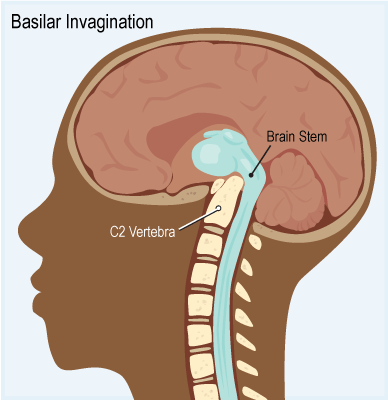Aug 12, 2023
Revolutionizing Treatment for Basilar Invagination - DCER
Medical science constantly evolves to find innovative solutions for complex conditions, and the case of a 68-year-old male from Uttar Pradesh (UP) with a basilar invagination who visited the department of neurosurgery at Sarvodaya Hospital, Sec 8, Faridabad, exemplifies the remarkable strides made in the field. Basilar invagination, a rare condition where the cervical bone protrudes into the brain, can lead to severe pain, mobility issues, and even progressive paralysis if left untreated. Traditionally, the surgical intervention involved the intricate and time-consuming transoral approach. However, a novel alternative technique known as DCER (distraction, compression, extension, and reduction.) has emerged, offering a safer, more efficient, and less invasive method to address this condition.


The Conventional Approach: Transoral Surgery
Historically, cases of basilar invagination have been treated through a surgical procedure called transoral surgery. This technique involves opening the patient's mouth and accessing the cervical bone through this route. The surgery requires 6 to 7 hours of keeping the mouth open, posing challenges such as postoperative eating and breathing difficulties. Additionally, the transoral approach carries risks of infection, significant blood loss, and potential damage to vital structures surrounding the surgical site.
The Alternative Approach: DCER (distraction, compression, extension, and reduction)
Recognizing the limitations of the transoral method, Dr. Kamal Verma, Director, Neurosurgery and Dr. Gaurav Kesri, Consultant, Neurosurgery at Sarvodaya Hospital, Sec 8, Faridabad sought to develop an alternative technique that would offer improved outcomes and fewer complications. The distraction, compression, extension, and reduction (DCER) approach represents a groundbreaking shift in the treatment of basilar invagination.
In the case of the 68-year-old patient, the DCER approach was employed to address his pain, mobility issues, and neurological deficits. Unlike the transoral method, DCER is performed from the back of the neck, targeting the C1-C2 joint – the point where the cervical spine meets the skull base. This approach minimizes the risk of damaging surrounding nerves and structures. During the DCER procedure, a cage is inserted at the C1-C2 joint to create additional space, allowing the brain area to move upward and consequently pushing out the protruding bone.
Benefits of DCER
This innovative technique offers several key benefits:
- Less Complications: The DCER approach significantly reduces the risks associated with traditional transoral surgery. By accessing the surgical site from the back of the neck, there is a lower likelihood of infection, blood loss, and damage to nearby structures.
- Early Mobility: The DCER technique offers quicker postoperative recovery due to its minimally invasive nature. Patients experience less discomfort and can regain mobility sooner than with the transoral approach.
- Enhanced Stability: Inserting a cage at the C1-C2 joint ensures improved stability of the affected area, reducing the chances of further complications and relapse.




